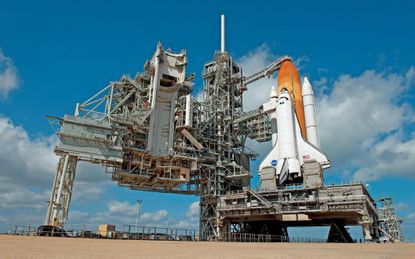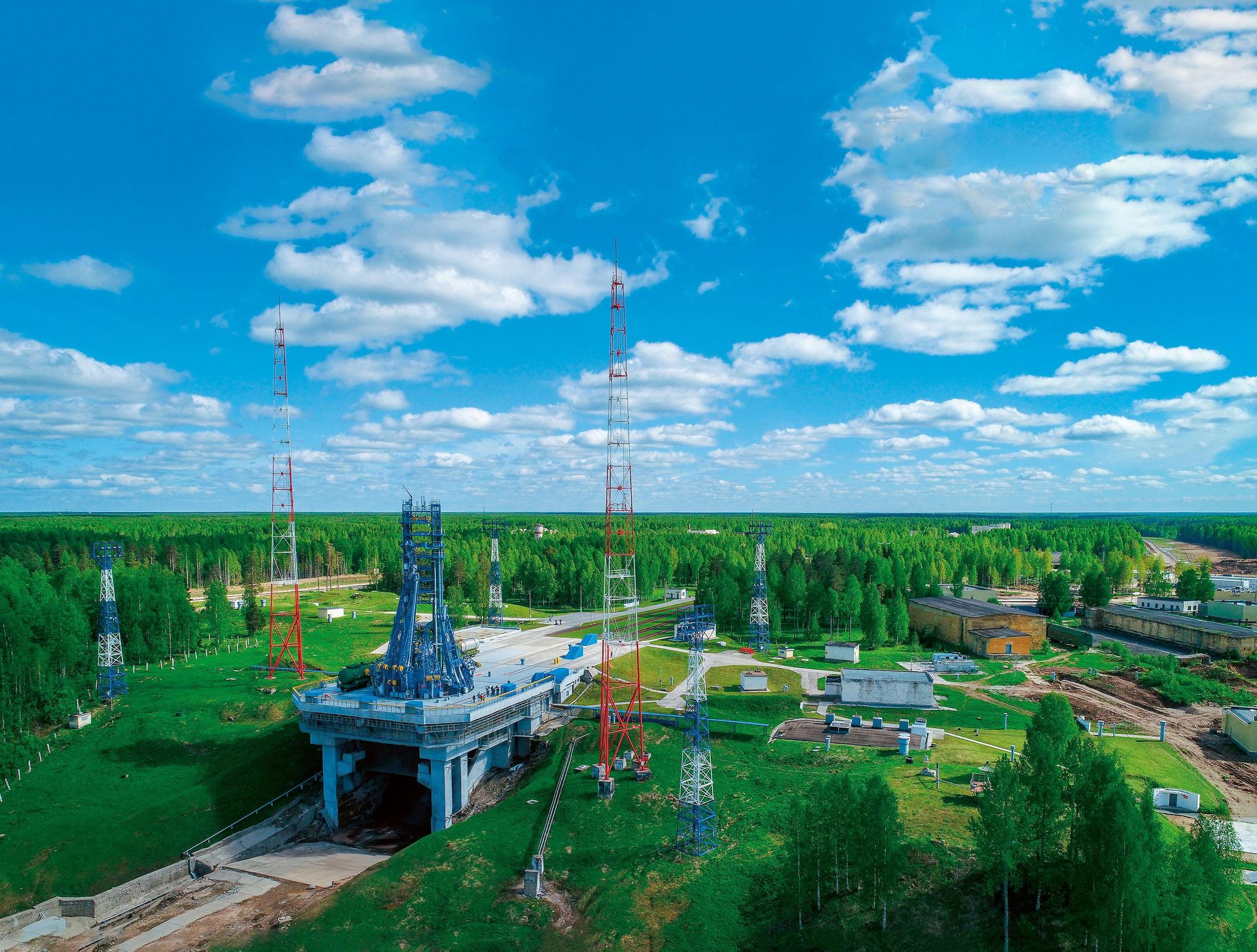New book for star-crossed cartophiles chronicles the world’s space bases, big and small
Blast off: ‘The Atlas of Space Rocket Launch Sites’ offers a global photographic tour of gateways into orbit, both high profile and off the radar
- (opens in new tab)
- (opens in new tab)
- (opens in new tab)
- Sign up to our newsletter Newsletter

The futurists envisioned a globe scattered with launch pads, with spaceports just as common as conventional runways. That vision has remained just out of reach for decades, and even the highest of high-profile initiatives – Branson, Musk, et al – hasn’t transformed space travel into an everyday occurrence.

The Atlas of Space Rocket Launch Sites
That said, the world is still peppered with launch sites, big and small – they just tend to be rather remote and unknown. Apart from the heavyweights like Florida’s Cape Canaveral and the Russian space programme launch site in Kazakhstan, the Baikonur Cosmodrome (the world’s oldest ‘space port’), many of the sites chronicled in this new atlas are only known to the experts.

Kosmodrom Plesetsk, Russia
DOM Publishers specialises in gazetteers of the architecturally unusual and remote, and The Atlas of Space Rocket Launch Sites is no different. Tracking down 29 sites, all ably charted by cartographer Katrin Soschinski, the book includes some decidedly off-the-books’ entries like North Korea’s Sohae Satellite Launching Station and Israel’s Palmachim missile base.

Jiuquan Satellite Launch Center, Inner Mongolia
Of course, a rocket base isn’t just a gantry and a few scattered huts. Typically, these are vast complexes, often buried deep in the jungle or the desert to keep people away from unexpected debris and unwanted secrets. The current fashion for launching at sea is also covered, as well as the trend towards the privatisation of space.

Sea Launch, Slavyanka, Russia
The atlas includes in-depth histories of every site, as well as a summary of the various key developments in space engineering that got us to this point. Whether it’ll remain a curious guide to thwarted ambitions or a chronicle of our first steps to the stars remains to be seen.

Naro Space Centre, Goheung, South Korea
The Atlas of Space Rocket Launch Sites, Paul Meuser (editor), Brian Harvey / Gubir Singh, cartography by Katrin Soschinski, €98
DOM Publishers, DOM-Publishers.com (opens in new tab)

Tanegashima Space Centre, Japan

Kourou, French Guiana
Jonathan Bell has written for Wallpaper* magazine since 1999, covering everything from architecture and transport design to books, tech and graphic design. He is now the magazine’s Transport and Technology Editor. Jonathan has written and edited 15 books, including Concept Car Design, 21st Century House, and The New Modern House. He is also the host of Wallpaper’s first podcast.
-
 Portable lights to illuminate your winter nights
Portable lights to illuminate your winter nightsThe best portable lights and where to buy them: brighten up your winter evenings with this edit of portable lamps for your desk, garden and more
By Rosa Bertoli • Published
-
 Last chance to see: Sterling Ruby’s ‘Turbines’ at Gagosian New York, marked here by our visit to the artist’s LA studio
Last chance to see: Sterling Ruby’s ‘Turbines’ at Gagosian New York, marked here by our visit to the artist’s LA studioStep inside American artist Sterling Ruby’s studio, divided into distinct areas of operation
By Hunter Drohojowska-Philp • Published
-
 The Fendi factory in Tuscany disappears into the landscape
The Fendi factory in Tuscany disappears into the landscapeThe new Fendi Factory in Italy, set in the rolling hills of Tuscany, is the brainchild of Milan architecture studio Piuarch and the luxury brand
By Ellie Stathaki • Published
-
 Thanks to Artificial Intelligence, is the writing on the wall for the creative professions?
Thanks to Artificial Intelligence, is the writing on the wall for the creative professions?New AI tools – such as writing bot ChatGPT and AI image generator DALL·E – are coming to transform reality. But can they write and illustrate Wallpaper*, asks Jonathan Bell?
By Jonathan Bell • Published
-
 Minimoog Model D synthesiser: the analogue legend returns
Minimoog Model D synthesiser: the analogue legend returnsSynth completists and collectors, as well as a new generation of avant-garde musicians, hail the return of Moog’s 1970 Minimoog Model D
By Jonathan Bell • Published
-
 Love Hultén’s eccentric electronics projects chronicled in new book
Love Hultén’s eccentric electronics projects chronicled in new bookWorks is a beautiful new book about the bespoke audio and visual creations of Swedish craftsman Love Hultén
By Jonathan Bell • Published
-
 We’re spun around by Phaidon’s new history of turntable design
We’re spun around by Phaidon’s new history of turntable designRevolution: The History of Turntable Design provides entertaining insight into the many ways that designers have shaped the simple record player over the decades
By Jonathan Bell • Last updated
-
 Wallpaper* Smart Space Awards 2022 winners: best design and tech for the home
Wallpaper* Smart Space Awards 2022 winners: best design and tech for the homeHere are the winners of the Wallpaper* Smart Space Awards 2022 – discover what’s new and next in the world of domestic design and technology
By Jonathan Bell • Last updated
-
 Apple Brompton Road arrives at Knightsbridge Estate
Apple Brompton Road arrives at Knightsbridge EstateThe new Apple Brompton Road store, designed by Foster + Partners at The Knightsbridge Estate, is revealed
By Ellie Stathaki • Last updated
-
 ABBA Voyage director Baillie Walsh on songs, sequins, and virtual spaces
ABBA Voyage director Baillie Walsh on songs, sequins, and virtual spacesBaillie Walsh, the director behind ABBA Voyage, one of the most advanced entertainment spectacles ever, tells Wallpaper* how the magic happens, ABBAtars and all
By Jonathan Bell • Last updated
-
 Retro favourite Game Boy has been given a new lease of life
Retro favourite Game Boy has been given a new lease of lifeGame Boy has turned Game Man, just in time for the original device's 30th birthday
By Luke Halls • Last updated










